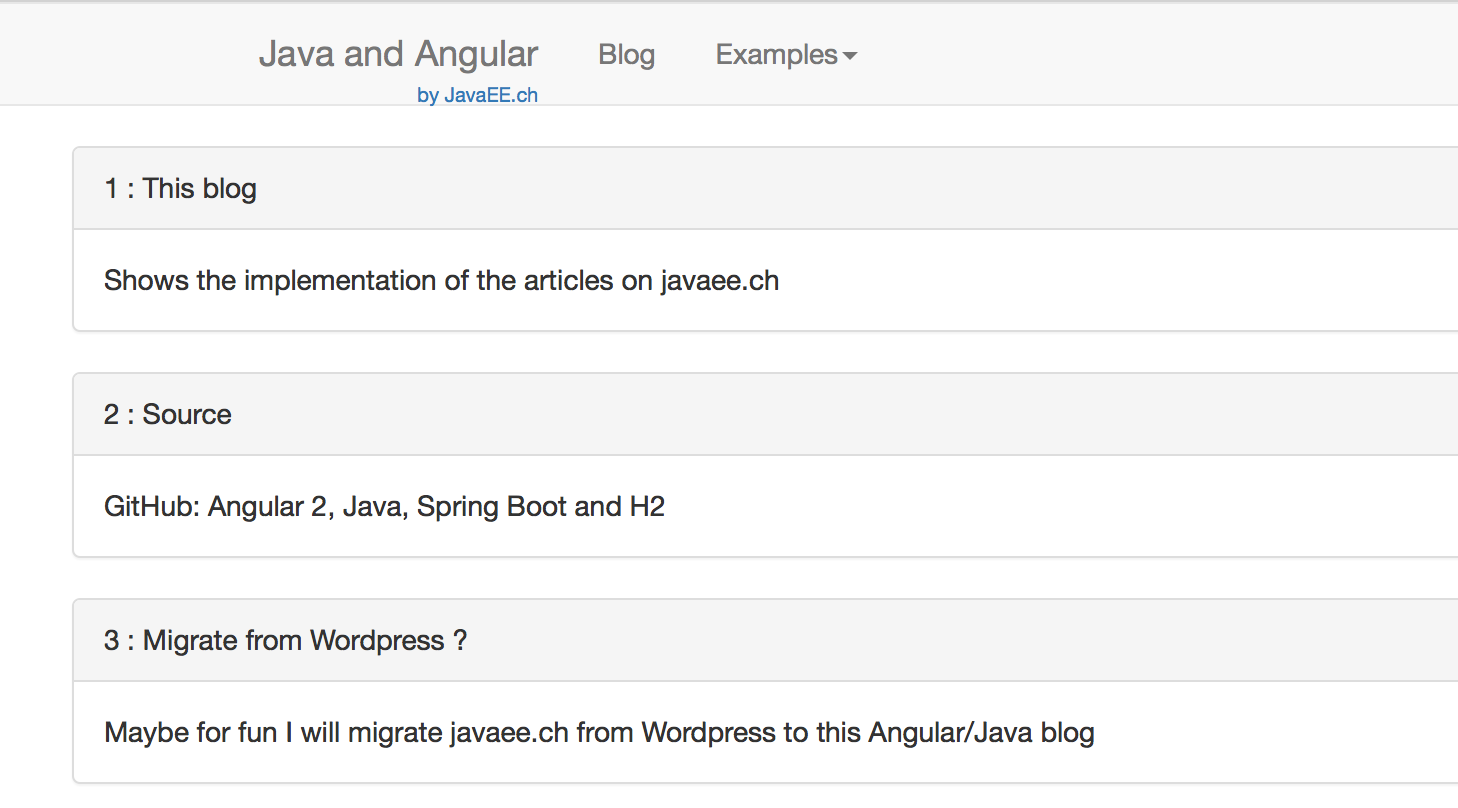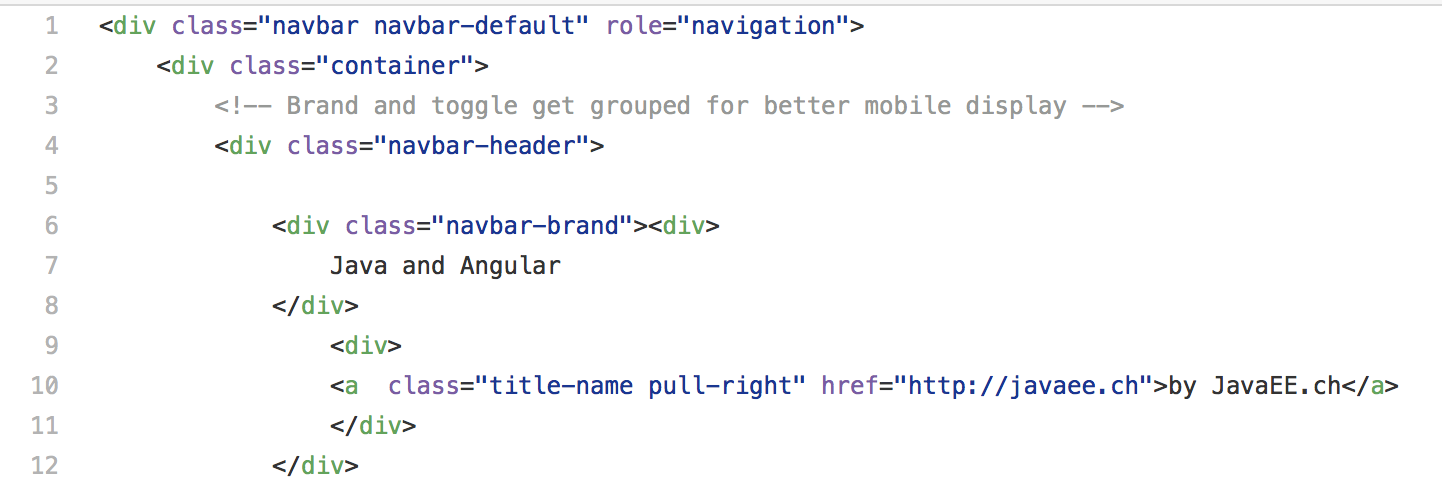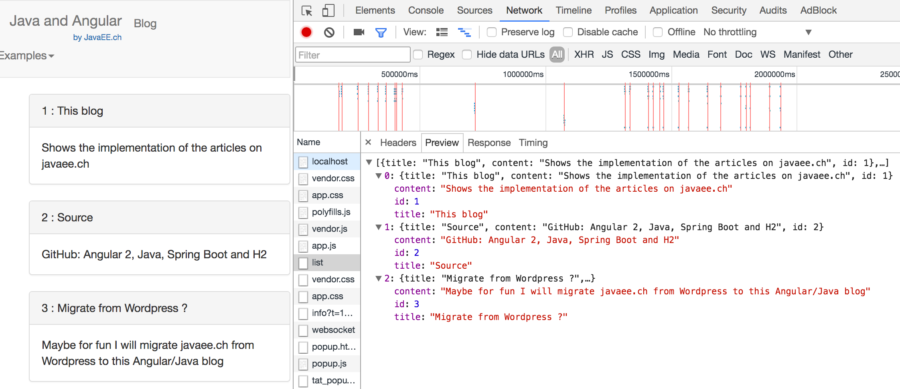Configure Bootstrap with Angular 2, Webpack and Spring – Tutorial
I update the reference Angular/Java application for this blog (https://angular.cafe) adding Bootstrap.
The new homepage is now like this:
The data comes from an H2 database deployed with the application.
To use Bootstrap this step are required:
in package.json add the dependency to bootstrap
"bootstrap": "3.3.7",
"jquery": "3.1.1"
or import it with npm install bootstrap@3 -save
and npm install jquery -save
I didn’t import Bootstrap 4 because is still in alpha version.
We have to tell to webpackage to import the files in the distribution package. In vendor.ts add:
// bootstrap
import 'jquery';
import 'bootstrap/dist/js/bootstrap';
import 'bootstrap/dist/css/bootstrap.min.css';
in webpack.common.js I added the ‘synonyms’ of jquery:
new webpack.ProvidePlugin({
jQuery: 'jquery',
$: 'jquery',
jquery: 'jquery'
})
I created a menu component that contains the bootstrap tags:
You can see the content here: home.html
The component menu.component.ts is self explanatory:
import {Component} from "@angular/core";
@Component({
selector : 'bootstrap-menu',
templateUrl :'../html/menu.html'
})
export class MenuComponent {
constructor(){
}}
To reuse the same menu in every page I call the menu component from the app.component.ts that is the main component of the module:
@Component({
selector: 'my-app',
template: `<bootstrap-menu></bootstrap-menu>
<router-outlet></router-outlet>
`,
providers: [HttpModule, ConstantsService, Location]
})
the template calls the bootstrap menu
In the developer console you can see the data sent by the server:



